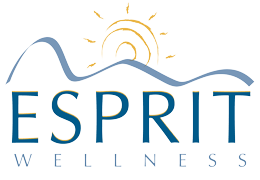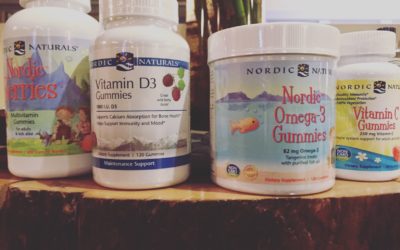GRASTON TECHNIQUE THERAPY
WHAT IS THE GRASTON TECHNIQUE®?
 The Graston Technique is an interdisciplinary treatment technique used by nearly 5000 clinicians-including athletic trainers, chiropractors, hand therapists, occupational and physical therapists, including New York’s Esprit Wellness, in Manhattan, New York City. The Graston Technique is utilized at some 550 out-patient facilities and industrial on-sites, by more than 90 professional and amateur sports organizations, and is part of the curriculum at 21 respected colleges and universities.
The Graston Technique is an interdisciplinary treatment technique used by nearly 5000 clinicians-including athletic trainers, chiropractors, hand therapists, occupational and physical therapists, including New York’s Esprit Wellness, in Manhattan, New York City. The Graston Technique is utilized at some 550 out-patient facilities and industrial on-sites, by more than 90 professional and amateur sports organizations, and is part of the curriculum at 21 respected colleges and universities.
THE GRASTON TECHNIQUE ADVANTAGES FOR THE PATIENT:
- Decreases overall time of treatment
- Fosters faster rehabilitation/recovery
- Reduces need for anti-inflammatory medication
- Resolves chronic conditions thought to be permanent
- Continues to engage in everyday activities
THE GRASTON TECHNIQUE ADVANTAGES FOR EMPLOYERS AND THE HEALTHCARE INDUSTRY:
- Allows patients to remain on the job
- Reduces the need for splints, braces and job-site modifications
- Contributes to reduction of labor and healthcare costs, direct and indirect
SIX STAINLESS STEEL INSTRUMENTS FORM THE CORNERSTONE OF GRASTON TECHNIQUE®
The Graston Technique® Instruments allow a deeper, more sensitive palpation and treatment of fibrotic restricted tissue.”The curvilinear edge of the patented Graston Technique® Instruments combines with their concave/convex shapes to mold the instruments to various contours of the body. This design allows for ease of treatment, minimal stress to the clinician’s hands and maximum tissue penetration. The Graston Technique® Instruments, much like a tuning fork, resonate in the clinician’s hands allowing the clinician to isolate adhesions and restrictions, and treat them very precisely. Since the metal surface of the instruments does not compress as do the fat pads of the finger, deeper restrictions can be accessed and treated. When explaining the properties of the instruments, we often use the analogy of a stethoscope. Just as a stethoscope amplifies what the human ear can hear, so do the instruments increase significantly what the human hands can feel.— Warren I. Hammer, MS, DC, DABCO
CLINICAL APPLICATIONS OF THE PATENTED GT INSTRUMENTS
The Graston Technique® (GT) Instruments, while enhancing the clinician’s ability to detect fascial adhesions and restrictions, have been clinically proven to achieve quicker and better outcomes in treating both acute and chronic conditions, including:| Cervical sprain/strain (neck pain) | Lumbar sprain/strain (back pain) |
| Carpal Tunnel Syndrome (wrist pain) | Plantar Fasciitis (foot pain) |
| Lateral Epicondylitis (tennis elbow) | Medial Epicondylitis (golfer’s elbow) |
| Rotator Cuff Tendinitis (shoulder pain) | Patellofemoral Disorders (knee pain) |
| Achilles Tendinitis (ankle pain) | Fibromyalgia |
| Scar Tissue | Trigger Finger |
| Shin Splints |
OUTCOME STUDIES
TherapyCare Resources (TCR) has analyzed the results of patient care by utilizing the outcome analysis system of the Graston Technique® for licensed clinicians. The positive clinical results achieved thus far have led to additional research that explores patient responses to the Graston Technique®. Patient outcome data that measures pain and function – including activities of daily living – continues to be gathered. Graston Technique® is a registered trademark and the GT Instruments are patented under U.S. Patent numbers 5,231,977; 5,366,437; 5,441,478; 5,707,346; 6,126,620.BREATH & FUNCTIONAL EXERCISE
Almost nothing is ever counseled on the subject of breathing at either the beginning or advanced levels of training. Occasionally one will receive the obligatory disclaimer, “Exhale while lifting,” or “Don’t hold your breath!” Even the exercise participant himself...
Nutrition Wellness: Truth about Supplements
Nutrition Wellness: Truth about supplements As nutrition wellness advocates, ESPRIT WELLNESS encourages you to turn to a diet of nutrient rich foods to ensure optimal nutrition. However, clients suffering from specific conditions, feel that their circumstance require...
Chiropractic: Turn the POWER on!
Clark Griswold stands with bated breath and extension cord in hand as a childlike giddiness overtakes him. The family drum roll commences, he makes the anticipated electrical connection and VOILA... nothing happens. Clark has a power problem. Although the extension...



